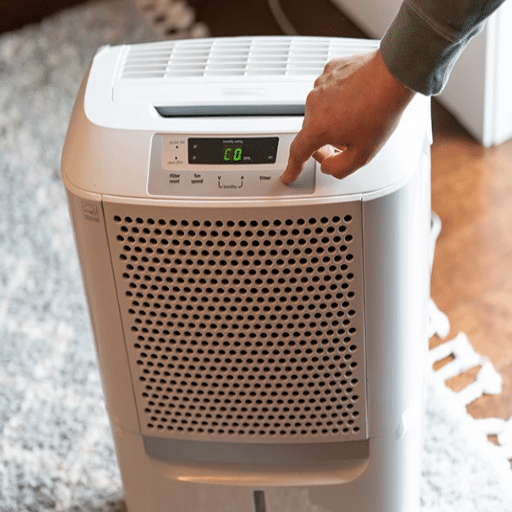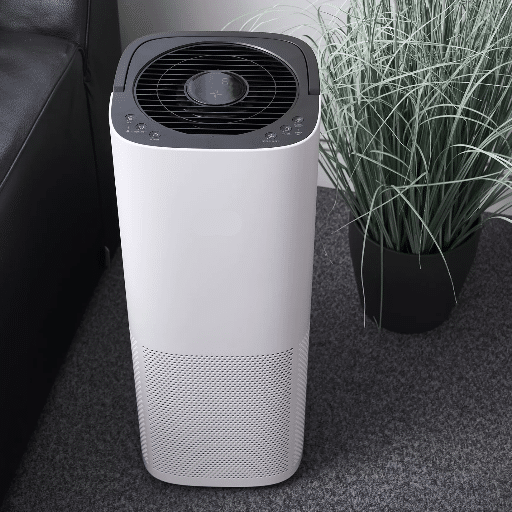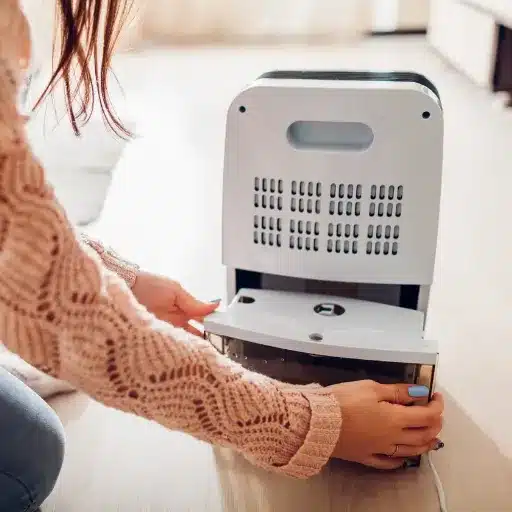Too much moisture trapped in indoor spaces may cause many problems, leading to weakness in construction and health problems. This section focuses on the practical advantages gained from using a dehumidifier and investigates at what specific times processes of dehumidification are necessary and how they become a part of one’s residential or workplace. This way, we clearly define circumstances when a dehumidifier is advantageous in tackling common problems brought about by high humidity.
What exactly is a dehumidifier and how does it work?
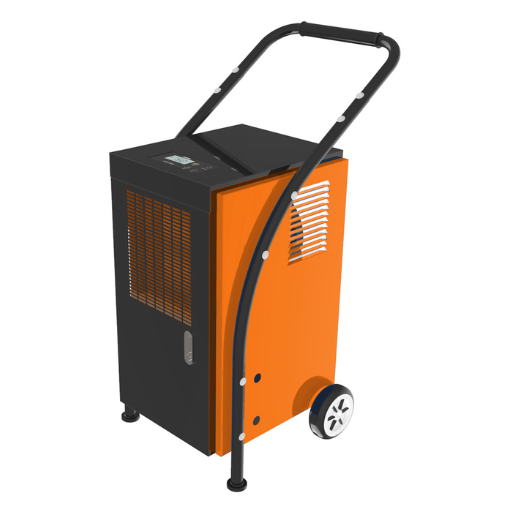
A dehumidifier is a type of appliance meant to maintain the prescribed level of relative humidity indoors by lowering the moisture content of the air. It works by drawing in air from the environment using a fan, which is then circulated over cooled coils to convert its water vapor into liquid water. The collected water is either discharged outside the house or stored in a container. The cooled air is subsequently reheated and released into the room. This procedure is effective at preventing the growth of molds and other problems associated with excess moisture indoors.
Fundamentals of Dehumidification
The term dehumidification refers to the reduction of moisture from the air, which is necessary to achieve the desired indoor moisture conditions of around 30%-50% relative humidity. This is possible using a fan, evaporator coils, a condenser, and a storage container or a drainage system. The fan pulls in air which is then cooled via the evaporation coils, resulting in condensation of water vapor. The water vapor that was condensed is then collected and removed from the air and the air that is pumped back into the room is heated using the condenser. Important technical aspects need to be addressed, such as dehumidification capacity, measured in pints of water, efficiency ratings, such as the energy factor or integrated energy factor, and other operating conditions like temperature ranges. These measurements define the limits within which a particular dehumidifier would operate effectively and efficiently. In other words, these metrics provide a critical framework for determining the suitability and performance of a dehumidifier in maintaining a balanced and healthy indoor atmosphere.
The scientific principles that guide the extraction of moisture from the air
The principles of thermodynamics and phase change allow dehumidifiers to extract moisture from the air. Warm moist air that goes into the device evaporates as water vapor is strained through coils set at a lower temperature using a refrigerant loop. The difference in the temperature causes the warm moist air to condense, forming liquid, which reduces the air’s moisture content. The cooled air is then heated once again prior to being released into the environment, and the collected water is sent to a reservoir or drainage mechanism.
- Energy Efficiency – A higher rating indicates a unit’s ability to remove moisture, this is indicated in pints per day (PPD). The unit’s can serve more humid spaces with higher PPD ratings.
- Dehumidification Capacity—For these measurement units, the Energy Factor (EF) or Integrated Energy Factor (IEF) is substituted by liters per kilowatt hour (L/kwh), which indicates an energy efficiency measurement.
- Energy Factor range – This indicator shows how well the dehumidifier works within temperature limits, which is essential in colder places where frost build-up can hinder operation.
- Airflow Rate: CFM – The unit of measurement for airflow rate is often performed in CFM. A dehumidifier with proper airflow alleviates the amount of air processed, improving the demudification process.
Types of dehumidifiers and their functions
Refrigerant Dehumidifiers
Refrigerant dehumidifiers, commonly known as compressor dehumidifiers, work by pulling moist air over cooled coils. The cooled coils cause the water vapor in the air to condense into a liquid. The refrigerant then collects the water and either drains it or places it in the reservoir. The units perform their best in hot and humid areas since condensation is most effective at the coils. However, the unit becomes inefficient in cold conditions due to frost collecting on the coils.
Desiccant Dehumidifiers
One of the most widely used dehumidifiers is the desiccant device. A substance that absorbs water, such as silicon gel, is a key component of the device. When the gel becomes saturated, the device heats it to release the water it captured. The desiccant becomes unsaturated and is able to absorb water again. These systems are designed mainly for colder environments and function efficiently regardless of temperature. However, the energy requirements to heat the gel are considered high.
Thermoelectric Types of Dehumidifiers
The working principle of thermoelectric dehumidifiers is based on the Peltier effect where electricity is passed through a thermoelectric module, creating a temperature change. Cold air is wrapped over one side of the module’s, which condenses moist air into droplets, while the other side emits heated air. Such devices are relatively lightweight, low in noise, and most appropriate for enclosed areas that are moderately humid, since they do not remove as much moisture as others.
Whole House Dehumidification Systems
Whole house dehumidifiers are placed within the buildings’ HVAC (heating, ventilation and air conditioning) system and are designed to control humidity in an entire house or building. These systems can treat large amounts of air simultaneously and tend to be very efficient over large spaces.Wi-Fi-enabled Dewpoint Relative Humidity meters are commonly used with these systems and can also be set to contain humidity within pre-stipulated limits. Due to their scale, installation and maintenance require professional expertise, and they represent a higher initial investment than portable models.
Ionic Membrane Dehumidifiers
Ionic spray dehumidifiers utilize polymer membranes to extract moisture from the air. This technique employs electrochemical processes to electrokinetically pump the moisture through the membrane, allowing for a compact and noiseless method. Ionic dehumidifiers are commonly used in sensitive electronics or industries with ultra-precise humidity control. Because of this specialization and cost, ionic dehumidifiers are not as common in homes.
When do you really need a dehumidifier in your home?
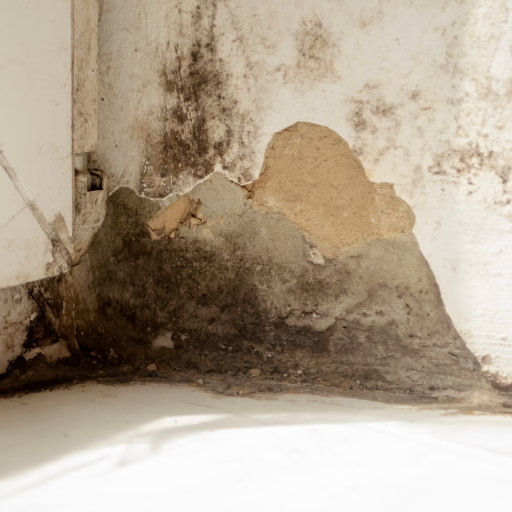
It is essential to utilize a dehumidifier when one’s home is showing signs of too much humidity such as water building up and settling on windows, unexplainable mold smells, mold growth, or dust mites. High levels of humidity (over 60 %) can be damaging to health and decrease the quality of air within a room. It can also contribute towards potential allergens and damage to the structure in the long run. Using a dehumidifier aids in providing the correct level of indoor humidity and helps ensure protection for the individual’s property and well-being.
Excessive Moisture Indicators within a Living Space
- Condensation on Windows and Walls: If you notice visible condensation on windows, especially in the mornings, it is best to check the room’s humidity level. Condensation forms when warm air meets colder surfaces; hence, the higher the indoor temperature, the more moisture builds up.
- Musty or Moldy Odors: Strong, unpleasant odors that seem to be present in high damp areas such as washing basements and bathrooms can signal concern due to the prolonged moisture.
- Visible Mold or Mildew Growth: Spots that appear black or green on walls, ceilings, or other parts of the bathroom are a clear indication of excess moisture. In addition, poorly ventilated areas may also have powdery, white mildew.
- Warped or Damaged Wooden Structures and Furniture: Increased humidity may distort or deform furniture, such as tables, chairs, or couches. Similarly, doors, windows, and floors may swell and lose their structural integrity.
- Paint and Wallpaper Damage: Areas prone to high moisture content, such as bathrooms and kitchens, may experience excessive humidity, leading to weakened adhesive bonds. This may result in wallpaper peeling off and paint cracking and bubbling.
- Respiratory or Allergy Symptoms: Humidity may worsen an individual’s condition by worsening allergens such as dust and mold spores that tend to trigger some response. This may result in an exacerbated state of respiratory irritation or allergy.
- Discoloration or Water Stains: Persistent caps of dampness left unbothered may result in structural damage and can appear in the forms of dark stains on ceilings, walls, or floors.
Ideal humidity levels for comfort and health
It has been determined that 30% and 50% indoor humidity levels are considered most comfortable and optimal for health. Alterations in these parameters can adversely affect health; for instance, levels lower than thirty percent could cause skin dryness, respiratory irritation, or weak immune response, while levels higher than fifty percent could promote the development of molds, dust mites, and other harmful allergens. This balance can be achieved by using methods such as dehumidification, humidification, or appropriate ventilation in specific rooms like the kitchen, bathroom, and basement. In addition, these instruments allow for increased accuracy and feedback to help reach and maintain the acceptable levels of humidity throughout the year.
Specific rooms and areas that benefit most from dehumidification
Not all areas of a house need dehumidification service. However, areas that experience high humidity, such as basements, separate bathrooms, kitchens, or even laundry rooms, require this service. One of the most challenging areas to ventilate and keep dry are the bathrooms, as they are prone to moisture buildup due to showers and baths. Steam and condensation are quite prevalent in the kitchen as well, so a dehumidifier is necessary to keep moisture at bay. These high moisture areas must be monitored and dehumidified regularly to keep them from mold, musty odors, and mold growth. Effective dehumidification allows for the building materials to endure water without sustaining damage.
What are the top health benefits of using a dehumidifier?
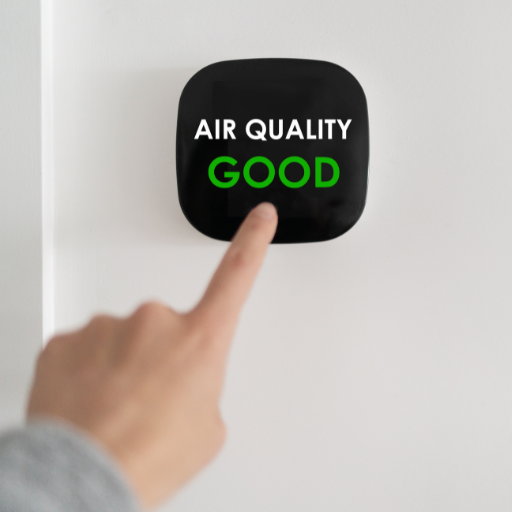
Using a dehumidifier has plenty of beneficial effects on one’s health. Eliminating additional moisture in the air lessens the possibility of mold and mildew growth that serve as allergens and can trigger breathing problems like asthma and other allergies. Dehumidifiers also reduce dust mites, which are a known cause of allergies and enhances air quality within the house. In addition to these, optimal humidity levels also decrease the probability of fungal infections and skin infections common in highly damped areas. This results in a healthier environment, especially for people suffering from respiratory diseases or other similar health problems.
Relieving allergy and asthma symptoms
Employing a dehumidifier to relieve allergy and asthma symptoms revolves around regulating indoor humidity, which is critical to controlling atmospheric allergens. In essence, the range of moisture in the air should be controlled at 30 – 50 % because such levels inhibit the growth of dust mites, mold spores, and mildew, which are all vital for aggravating asthma and allergy conditions. These allergens are in high abundance in the atmosphere. The dehumidifiers remove moisture in the air and create conditions which these allergens cannot sharpen. This reduced humidity not only boosts air quality but also reduces the severity of respiratory conditions by eliminating triggers for asthma such as dampness and airborne irritants. These features, in combination with HEPA filters for allergen containment, make advanced models of the devices more effective. Most advanced models include strong particulate air (HEPA) filters to improve allergen containment and other features to improve indoor health like precise humidity control and continuous drainage.
Empfohlene Maßnahmen zur Minderung von Milben und Allergenen
Die Hauptursache für Allergien im Haus sind mikroskopisch kleine, staubmilben, die sich bei hoher Luftfeuchtigkeit gut vermehren. Um zu verhindern, dass sich diese Organismen vermehren, sollten FeuchtigkeitswerteInnen zwischen 30 und 50 Prozent gehalten werden. Ein gründliches Waschen der Bettwäsche, Vorhänge und anderer Haushaltstextilien bei einer Temperatur von 54 Grad, tötet die sich in den Materialien vergrabenden Staubmilben ab. Das benutzen von allergendichten Hüllen für Matratzen und Kissen sorgt zudem für eine zusätzliche Barriere gegen die Milben. Die Anwendung von Staubsaugern mit HEPA-Filtern hilft ebenfalls, Staubmilben und die Allergene, die sie absondern, aus Teppichen und Polstern zu entfernen. Dazu taugen auch Luftreiniger mit der gleichen Filtertechnik,die die restlichen Partikel einfangen, die allessensensibilisierung auslösen können. Diese Maßnahmen helfen proaktiv beim reduzieren von indoor Allergenen und verbessern das Atemvergnügen in der Wohnung.
Improving overall indoor air quality
There are many approaches one can take towards improving one’s indoor air quality. One effective means is to increase the circulation of the air in your home or office. Bringing in fresh air from the outside helps to decrease the concentration of pollutants in the indoor air. Air cleaners with HEPA filtration systems have also been engineered to eliminate fine particles such as dust and pollen effectively. Additionally, the use of heavy duty cleaning agents and other household products with high volatile organic compound (VOC) content contributes to indoor pollution. Instead, using products with low or non-emitting VOCs may help reduce pollution in the indoor air. Furthermore, maintaining the order in one’s surroundings by routinely fabric cleaning, dusting, and vacuuming aids in the improvement of the overall indoor air quality. Controlling the humidity of the unit with a dehumidifier or a well-maintained air conditioner reduces the indoor temperature, which inhibits mold growth and dust mites, thus improving the overall environment.
How can a dehumidifier protect your home and belongings?
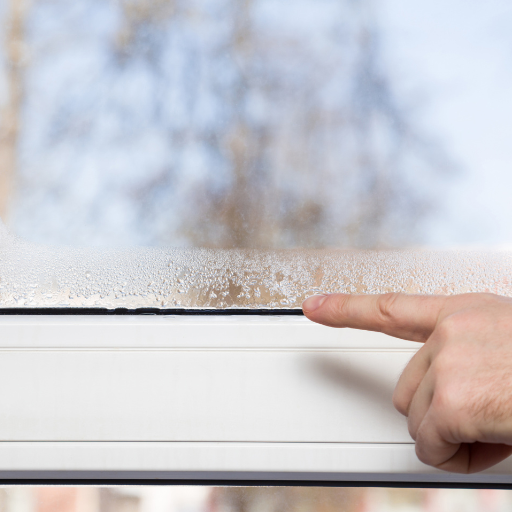
A dehumidifier is like an air conditioner as it removes extra moisture from indoor air, which helps to protect the house from mold as well as odor. Preventative measures against mold or mildew are often prohibitively costly, with some getting to the expense of furniture rot, wood warp, or even destruction of targeted belongings such as books or clothing. However, maintaining the desired amount of humidity is effortless with a dehumidifier. This not only keeps the balance of the air quality inside the house, but also helps protect the building structure from damage. More importantly, reducing allergens such as dust mites results in a better quality of life within the building.
Preventing Mold and Mildew from Growing
Mold and mildew can flourish when the humidity is above 60%. Thus, controlling the moisture levels is extremely important. According to the Environmental Protection Agency (EPA), dehumidifiers solve this by keeping the indoor humidity within 30-50% range. This stops the growth of these fungi by not giving them the moister environment they need to thrive. In addition to using a dehumidifier, proper air circulation and ventilation also reduce the chances of stagnant air pockets where mold can grow. Water leaks and condensation must also be handled because they can worsen the moisture levels. With the installation of the dehumidifier and regular upkeep of the surroundings, the chances for mold and mildew to flourish increase dramatically.
Reducing the Moisture Effect on Electronics and Furniture
If left unchecked for long periods, furniture and electronic items stand to be severely damaged with high humidity levels. With wooden furniture being the most susceptible type, unfamiliar conditions can cause wooden objects to warp, swell, or even fully rot. Upholstered items, while not wooden in nature, can also be damaged in the form of molds and mildew growing around them. Dehumidifiers are critical to maintaining these strong wooden and delicate fabric materials as they maintain a relative humidity of materials below 50-55%.
Moisture is especially dangerous to electronics as it can cause internal components to corrode or compromise, leading to malfunctions or even permanent failures. Sensitive devices are prone to condensation, and moisture is the least suitable atmosphere. For electronics, the ideal humidity level is usually set higher than 30 but lower than 50 as it minimizes the risk of transistor static discharge while also preventing moist buildup.
Using a dehumidifier can significantly improve humidity control. Along with active environmental monitoring and keeping a silica gel packet around the strong electronics, these practices combined ensure reduced risk, maximizing the lifespan of both furniture and electronics.
Water stains and condensation reduction
It is common for condensation and water stains to result from advanced exposure to moisture and lack of proper ventilation. Airflow can be improved by opening windows, using exhaust fans, and installing ventilation systems in areas prone to moisture such as kitchens and bathrooms. These actions are necessary for reduction of condensation. Further, installing thermal insulation in ceilings, walls, and windows will also reduce the amount of condensation that occurs due to temperature differences. Controlling indoor humidity with a dehumidifier also helps, as the levels are ideally kept between 30 to 50%. Water stains require immediate action once they come into sight as they risk permanent damage. Lighter stains can be cleaned with water and vinegar, while stubborn ones require specialized cleaners. Lastly, environmental maintenance activities should be done regularly as they reduce the risk of environmental damage.
What energy-saving benefits does a dehumidifier offer?
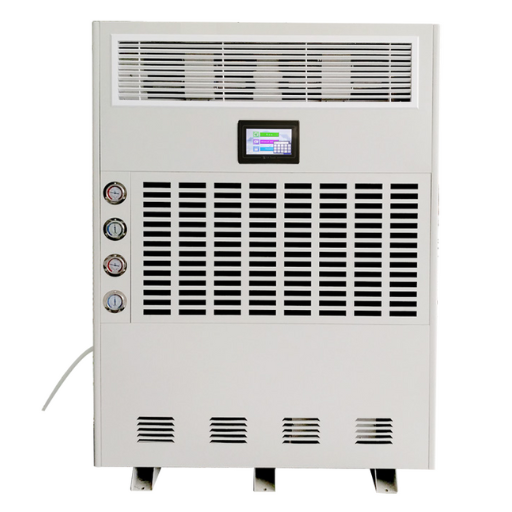
A dehumidifier saves a lot of energy because it reduces the burden placed on HVAC systems. Dehumidifiers protect insulation and structural components by preventing excess moisture, which helps maintain energy efficiency. Because moisture levels are controlled, air conditioning units work less because there is no need for excess energy to be expended to cool the space down. This results in a more cost-efficient and environmentally friendly indoor setting.
Generated savings from air conditioning
When the humidity levels are kept at the recommended values, a dehumidifier directly lowers the energy needs and expenses associated with the AC units. As described before, air feels more astonishing when the humidity is controlled, so higher thermostat settings can be achieved without discomfort. This reduces how often and with what intensity the air conditioning units are run, cutting down on power expenses and protecting the equipment simultaneously.
Ways to enhance efficiency of HVAC systems
To achieve optimal HVAC performance, a dehumidifier can be integrated, minimizing the cooling and heating requirements. Operating at high indoor humidity levels makes air feel muggy, which forces HVAC systems to overexert themselves at protecting these conditions. The dehumidifier eliminates excess moisture in the air, which helps lower latent heat so systems can cool down with greater ease, diminishing the overall workload. In theory, the relative humidity levels in residential spaces range between 30 to 50 percent, which is ideal as it minimizes discomfort and energy efficiency.
A well-functioning dehumidifier averts condensation-related problems that could occur on coils or ductwork, which can prevent heat transfer from working effectively. Coils that do not condense and clean ducts increase the performance of airflow and heat exchange, improving operation effectiveness. Additionally, reduced strain on the HVAC equipment helps enhance the durability of components, which lowers maintenance frequency. The overall effectiveness of energy output while decreasing moisture levels helps reduce the overall efficiency of operating costs and maintain long-term sustainability.
How do you choose the right dehumidifier for your needs?
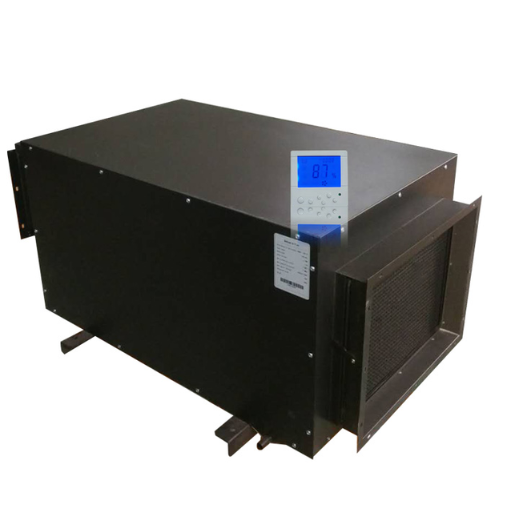
To recommend the best dehumidifier, it is essential to analyze the area’s dimensions and how much humidity is to be controlled. You may find the dehumidifiers rated in pints per day so measure the room’s square footage to help determine the capacity required. Also, check the environmental conditions. For instance, the humidity intensity, regions such as basements or crawl spaces might tend to be more wet. Consider the adjustable humidistat, energy rating, maintenance like filter positioning, or even drainage means. These are poor criteria and form a weak basis of understanding the piece of equipment. The efficiency and energy conservation will be achieved by choosing the right model.
Understanding Capacity And Coverage Area
Area and capacity coverage is proportionate to the area’s scale and the humidity range. I select the amount of moisture that can effectively be extracted from the air to measure the unit is effectiveness. My room size and the amount of humidity present should be considered. If the area is small, a less powerful unit is more than sufficient, while an effective unit better serves a large or heavily humidified area. Unit efficiency can be verified by the manufacturer’s recommendation regarding the coverage of square footage of cylinders.
Consider These Features While Purchasing a Dehumidifier
- Adjustable Humidistat: An adjustable humidistat allows a user to tailor the precise amount of moisture in a given space, allowing systems to be designed for efficient operation and comfort. The machine is also standard to switch on and off as necessary to sustain the preset humidity.
- Energy Efficiency: Seek dehumidifiers with the ENERGY STAR label, which shows less energy usage while still maintaining required results. These types of units also help cut down operational expenses in the long run.
- Auto-Defrost Function: This feature prevents ice from forming on the dehumidifier’s coils, ensuring effective operation at lower temperatures. This is especially important for cold places such as basements or garages.
- Drainage Options: Many modern dehumidifiers can drain water out without switching reservoirs, so a hose can be connected to a drain instead.
- User-Friendly Controls: Further, consider the ease of use in models with easy-to-control panels and the ease of reading current humidity through digital displays.
- Low Noise Levels: This can prove detrimental, especially when such units are placed in living spaces. Always check the decibel rating of the model to ensure quiet operation.
- Portability and Design: Dehumidifiers with wheels and the ability to be carried by a person’s hand have been designed to facilitate movement between rooms. Smaller dehumidifier models are ideal for confined areas.
- Filter Maintenance: Easy-to-detach and clean filters are good for the environment and can help reduce allergies. Check that the model is equipped with easy-to-access filters for simple maintenance.
- Auto-Restart Feature: If the dehumidifier is turned off due to a power failure, it will automatically turn on and start working again after the power returns, without Turbo needing to set the controls at an earlier point.
- Built-in Hygrometer: This feature enables the user to see the moisture content in the atmosphere on the monitor, making it easier to set the unit properly.
Options for Portable and Whole House Dehumidifiers
While both portable and whole-house dehumidifiers can help in moisture removal, they differ in almost every aspect. Portable dehumidifiers can be moved into the rooms you want to use them at. They are inexpensive and reduce moisture level in small areas. These devices must be drained manually but can be connected to a drain. Whole-home dehumidifiers are placed within the ductwork of an HVAC system and provide broad-ranging dehumidification. These systems are costlier and more complicated to set up because a professional must do it, but require low maintenance. They also perform better and optimizes the HVAC system as a whole. The available options vary based on the needed moisture removal, budget, and the size of the area.
Reference sources
Frequently Asked Questions (FAQs)
Q: What are the main benefits of a dehumidifier?
A: The benefits of a dehumidifier include reducing excess moisture in the air, preventing mold and mildew growth, eliminating musty odors, protecting furniture and belongings from moisture damage, and improving overall air quality. Dehumidifiers can also help in reducing energy costs by making your air conditioner work more efficiently in humid environments.
Q: When should I use dehumidifiers in my home?
A: You should use dehumidifiers when you notice signs of excess humidity in your home, such as condensation on windows, damp or musty odors, or visible mold growth. They are particularly useful in damp areas of your home like basements, crawl spaces, and laundry rooms. It’s also beneficial to use a dehumidifier if the relative humidity in your home consistently exceeds 50 percent.
Q: How do dehumidifiers work to remove moisture from the air?
A: Dehumidifiers work by drawing in humid air and passing it over a cold coil. This causes the water vapor in the air to condense into liquid water, which is then collected in a tank or drained away. The drier air is then reheated and released back into the room, reducing the overall humidity level.
Q: What tank size should I look for in a dehumidifier?
A: The ideal tank size depends on the humidity level and the size of the area you’re treating. For small to medium-sized rooms, a tank capacity of 10-20 pints is usually sufficient. For larger areas or very damp spaces like basements, you might want to consider a dehumidifier with a 30-50 pint capacity. Keep in mind that a larger tank means less frequent emptying.
Q: Can a dehumidifier help with allergies and respiratory issues?
A: Yes, a dehumidifier can help with allergies and respiratory issues by reducing the moisture in the air that allows allergens like dust mites, mold spores, and mildew to thrive. By creating a drier environment, dehumidifiers can contribute to breathing easier and may alleviate symptoms of a stuffy nose or other respiratory discomforts caused by high humidity.
Q: How can I tell if my home is too damp and needs a dehumidifier?
A: Signs that your home is too damp and might benefit from a dehumidifier include: visible condensation on windows or walls, musty odors, mold spots on walls or ceilings, warped wood, and increased allergy symptoms. You can also use a hygrometer to measure the relative humidity in your home; if it’s consistently above 50-60%, a dehumidifier could be beneficial.
Q: Are there any drawbacks to using a dehumidifier?
A: While dehumidifiers offer many benefits, there are a few potential drawbacks to consider. They can increase energy costs due to their power consumption, some models can be noisy, and they require regular maintenance such as emptying the water tank and cleaning the filters. Additionally, if used excessively, they can make the air too dry, which can cause discomfort and other issues.
Q: Can a dehumidifier help prevent pest infestations?
A: Yes, a dehumidifier can help prevent pest infestations. Many pests, including spiders, silverfish, and cockroaches, thrive in damp environments. By reducing the moisture in the air, dehumidifiers make your home less attractive to these pests. This is particularly beneficial in areas like basements and crawl spaces where pests often enter homes.

